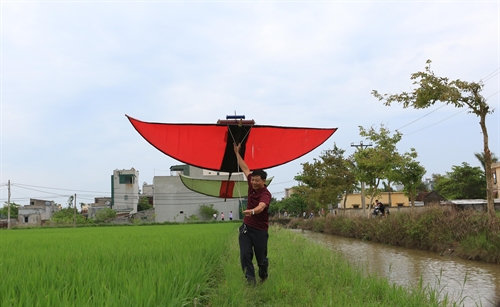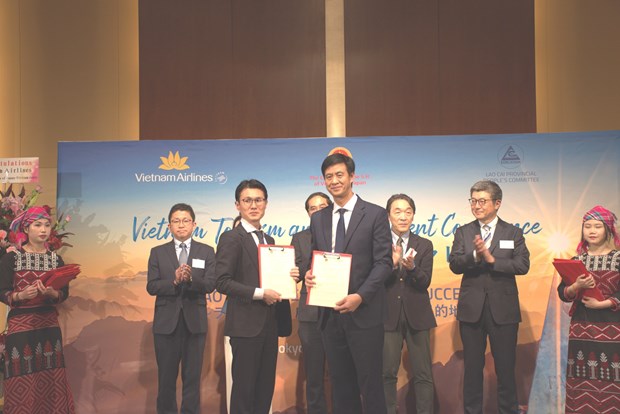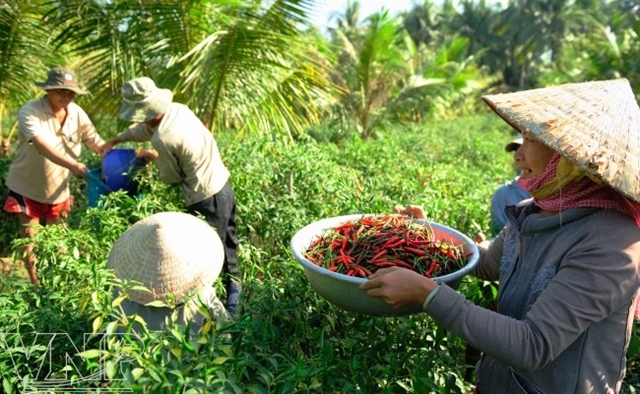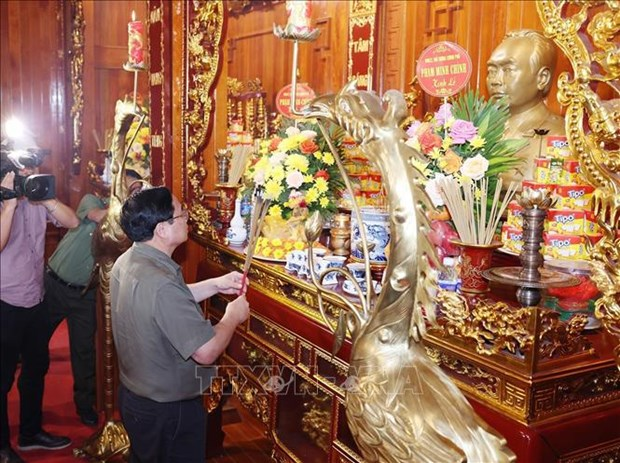

A lot goes into making a kite the traditional way. A special kind of kite that is flown in the northern province of Thái Bình during summer is one that makes music.
 |
A lot goes into making a kite the traditional way.
The right kind of light wood is needed and kite makers sometimes travel away from their homes to find such material.
A special kind of kite that is flown in the northern province of Thái Bình during summer is one that makes music.
People have been flying such kites for many, many years.
Thúy Hằng
Over decades, the image of kites flying over immense rice fields have provided inspiration for many Vietnamese artists and musicians.
Visiting Song An Commune, Vũ Thư District in the rural northern province of Thái Bình in summer time, no one can resist the picturesque landscape of boundless green rice fields, scenic grass dykes alongside the flowing river, and flute kites – looking like giant rice seeds – flying above it all, sounding bass melodies.
Although flute kites can be seen in some other regions in the North such as Hải Phòng and Nam Định, those of Thái Bình seem the most famous as they originate from the 15th century.
In the old days, creating a kite required many complicated steps. Local people had to crush green persimmons for the resin to make the kites water-proof. To make durable kite strings, they had to split bamboo into strips before boiling and soaking them in baked-limestone water to resist white ants.
The kite should measure at least 1.8m to be able to carry a flute made of bamboo and jackfruit wood, which is lighter than other kinds of wood.
“While a single flute kite produces only bass tones, a multiple flute kite can create various tones like an orchestra,” said Nguyễn Duy Đông, deputy head of the newly-founded Song An Commune’s Sáo Đền Flute Kite Club.
Nowadays, instead of paper, bamboo and wood, kite flyers are using more durable materials such as cloth, plastic (for kite wings), carbon fibre (for frames), and bronze and aluminium (for flutes).
The commune is also home to the Sáo (Flute) Temple – a national historic and cultural site, which hosts the Sáo Temple Kite Festival annually.
According to Vũ Văn Chính, keeper of the Sáo Temple, it was built in 1471 to worship Queen Mother Ngô Thị Ngọc Giao of King Lê Thánh Tông (1442-97) and the three meritorious brothers and officials Đinh Lễ, Đinh Bồ and Đinh Liệt, who made great contributions to the establishment of the Earlier Lê Dynasty.
Every year, on the death anniversaries of those figures, descendants of Đinh Lễ, who was also a great general of the Lê Dynasty, commemorate his merit by flying kites. Legend has it that Gen Đinh Lễ used to encourage his soldiers to fly kites to combat the fatigue and tiredness of battle.
Despite fierce wars or economic depressions following the end of wars, the festival has still been organised every year because the local residents want it to remain a lasting tradition of their ancestors. For them, like the imperative need of rice and water, flying flute kites are an essential part of their life.
Visitors to the Sáo Temple can see a 400-year-old flute kite hanging right up above the solemn main altar – evidence that the locals regard the kite as a significant spiritual source.
The 10-day festival, which is held from the 18th to the 28th day of the third lunar month, draws dozens of flute kite fliers and thousands of visitors from neighbouring areas.
Alongside a parade of the Queen Mother’s palanquin, the festival also features several contests or folk games such as cock fighting, swimming to catch ducks, and walking on a slender bamboo trunk supported by ropes over a pond, challenging competitors to keep their balance.
The flute kite competition is the most anticipated event of the festival with tens of kite flyers from the region participating.
Every year, the competition challenges all contestants to fly their kites through a narrow space between two 10m pillars topped by two sharp hooks. This is one of the most difficult challenges for any kite flyer.
If the competitors can’t master their skills enough to let their kite string get through the pillars without touching the obstacles, they are failed.
According to kite flyer Đông, who is also a member of the organisation board, some years the competition has no winner.
Preserving a tradition
The festival is not only to honour a tradition of the region, but also to help preserve centuries-old games.
“To encourage young people to learn more about the games, the festival also includes a kite making contest for children aged between 10 and 15,” Đông said.
Furthermore, a club gathering tens of flute kite flyers of all ages in Song An Commune was founded on July 24. Although the club members have different professions, including a photographer, farmers and an electrician, all share the common hobby of kite flying.
Called by other club members as the “prize conqueror”, herbalist Hoàng Gia Khánh has brought his DIY flute kites to compete often and has won several competitions nationwide. Certificates of merit and trophies can be seen on all the walls of his living room.
Khánh fell in love with flying flute kites at the age of 16, and has since shared his time between his two life goals: his herbal medicine career and his kite hobby.
For him, the most important factor of a good kite is the quality of the bamboo frame.
“The frame should be made from old bamboo plants. We never use bamboo grown by a river, lake or pond, because the water can soften the bamboo’s texture. It’s ideal to chop the bamboo during the dry season in the eight or ninth lunar month because the texture is more durable during that time,” revealed the 36-year-old herbalist.
With so many requirements, Khánh sometimes has to travel tens of kilometres to find quality bamboo.
To prevent termites, he places the bamboo on a smoking-shelf over the stove for about six months until the bamboo is completely dried. That is when the bamboo can be used to make the kite frame.
Đinh Minh Anh, a 49-year-old farmer, is head of the Sáo Temple Flute Kite Club. He owns a collection of 30 large kites and 30 sets of flutes.
Like herbalist Khánh, Anh also travels to another province to buy suitable materials.
“I often load my small van with enough bamboo and jackfruit wood to use for the whole year,” he said.
Anh now is producing a seven-metre kite, which can carry an ancient one-metre bamboo flute.
For him, flying flute kites is not only his passion but somehow also his responsibility to preserve the tradition of his homeland.
His passion for flute kites has been transmitted to his teenager daughter, who is a grade 10 student.
At the age of 88, villager Nguyễn Thành Tu can no longer fly his kites due to his health, especially his poor vision, however, his special interest seems to have been passed onto his son Nguyễn Văn Toàn.
Despite moving to HCM City almost 20 years ago, Toàn comes back to his home village regularly to team up with his childhood friends and fly flute kites once again. VNS
GLOSSARY
Over decades, the image of kites flying over immense rice fields have provided inspiration for many Vietnamese artists and musicians.
An image, in this case, means a sight: a scene that people see.
Immense means very large.
If something is an inspiration to you, it makes you want to go out and do something positive.
Visiting Song An Commune, Vũ Thư District in the rural northern province of Thái Bình in summer time, no one can resist the picturesque landscape of boundless green rice fields, scenic grass dykes alongside the flowing river, and flute kites – looking like giant rice seeds – flying above it all, sounding bass melodies.
To resist means to try hard not to do something. In this case it is to resist enjoying the landscape.
If the green rice fields are boundless, there seems to be no end to them.
A melody is a tune; a bass melody is a deep-toned tune.
Local people had to crush green persimmons for the resin to make the kites water-proof.
A persimmon is a type of fruit.
Resin is sticky liquid that comes from a plant.
To make durable kite strings, they had to split bamboo into strips before boiling and soaking them in baked-limestone water to resist white ants.
If something is durable it is strong and made to last.
According to Vũ Văn Chính, keeper of the Sáo Temple, it was built in 1471 to worship Queen Mother Ngô Thị Ngọc Giao of King Lê Thánh Tông (1442-97) and the three meritorious brothers and officials Đinh Lễ, Đinh Bồ and Đinh Liệt, who made great contributions to the establishment of the Earlier Lê Dynasty.
Meritorious means deserving of praise.
Legend has it that Gen Đinh Lễ used to encourage his soldiers to fly kites to combat the fatigue and tiredness of battle.
“Legend has it” means “according to stories that have been told a lot and for a long time.”.
To combat something means to fight against it.
Fatigue means exhaustion.
Despite fierce wars or economic depressions following the end of wars, the festival has still been organised every year because the local residents want it to remain a lasting tradition of their ancestors.
Economic depressions are time when there is not much work or money around.
Visitors to the Sáo Temple can see a 400-year-old flute kite hanging right up above the solemn main altar – evidence that the locals regard the kite as a significant spiritual source.
Solemn means grand, important and formal.
Alongside a parade of the Queen Mother’s palanquin, the festival also features several contests or folk games such as cock fighting, swimming to catch ducks, and walking on a slender bamboo trunk supported by ropes over a pond, challenging competitors to keep their balance.
A palanquin is a box in which an important person sits and is carried by porters.
The flute kite competition is the most anticipated event of the festival with tens of kite flyers from the region participating.
The most anticipated event is the event that people are waiting to see the most.
If the competitors can’t master their skills enough to let their kite string get through the pillars without touching the obstacles, they are failed.
Obstacles are things that are in the way of something you want to achieve.
The festival is not only to honour a tradition of the region, but also to help preserve centuries-old games.
To preserve old games means to keep them going.
Called by other club members as the “prize conqueror”, herbalist Hoàng Gia Khánh has brought his DIY flute kites to compete often and has won several competitions nationwide.
A herbalist is someone who works with and knows a lot about plants that can be used as medicine.
“It’s ideal to chop the bamboo during the dry season in the eight or ninth lunar month because the texture is more durable during that time,” revealed the 36-year-old herbalist.
The texture of the bamboo is the way it feels.
To prevent termites, he places the bamboo on a smoking-shelf over the stove for about six months until the bamboo is completely dried.
Termites are a type of insect that can eat wood.
WORKSHEET
Find words that mean the following in the Word Search:
s | t | s | j | i | p | g | r | u | e | k | l |
f | h | e | r | b | a | l | i | s | t | b | a |
p | f | a | r | m | e | r | l | r | p | a | z |
b | i | t | r | m | n | s | p | o | r | m | e |
o | j | v | f | b | i | d | x | v | h | b | w |
y | i | x | d | g | d | t | o | y | q | o | d |
i | n | z | x | z | g | z | e | l | r | o | k |
a | g | i | e | f | k | i | s | o | u | r | p |
t | j | k | v | u | d | h | n | d | g | s | l |
d | r | i | c | E | y | c | t | v | z | a | o |
1. Termite; 2. Bamboo; 3. Herbalist; 4. Farmer; 5. Rice.








